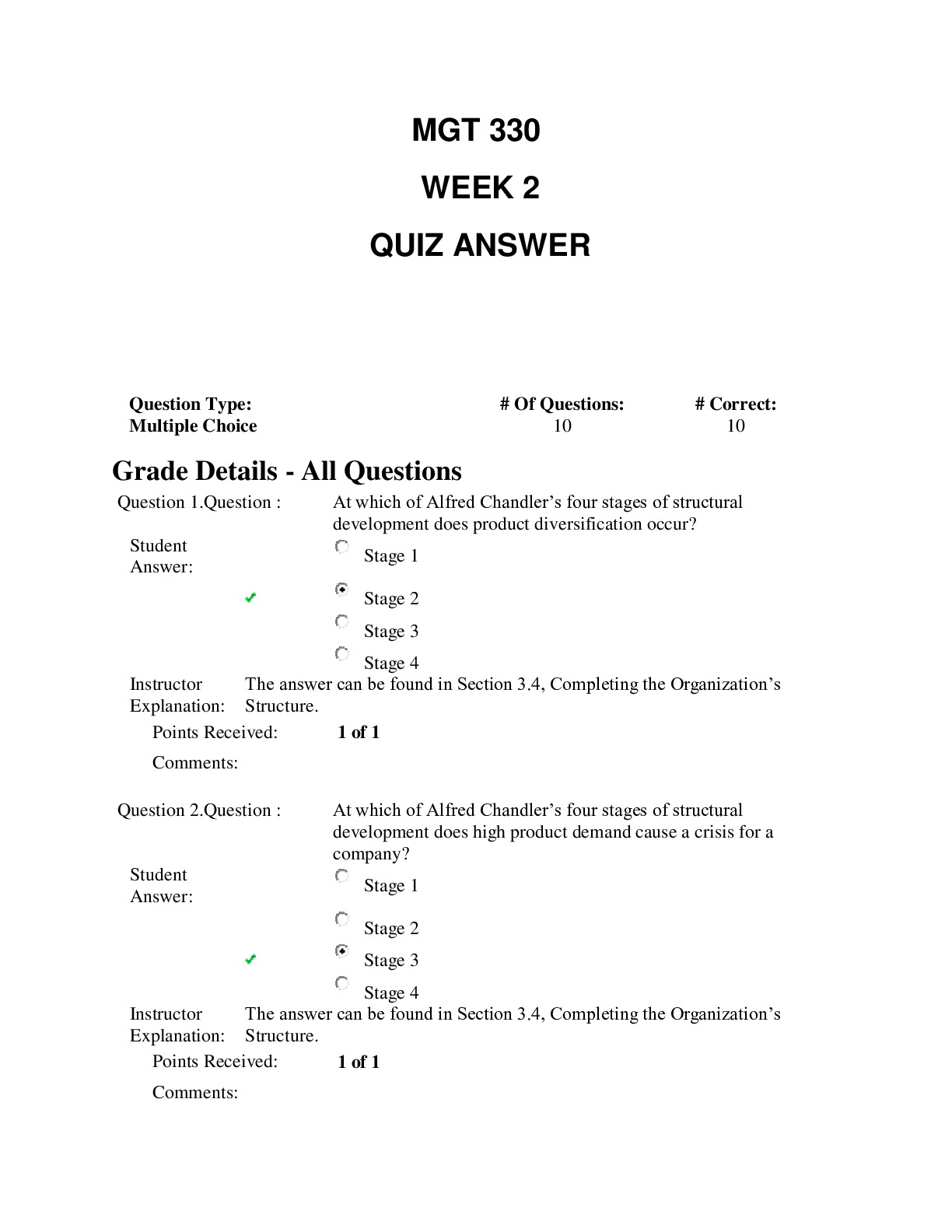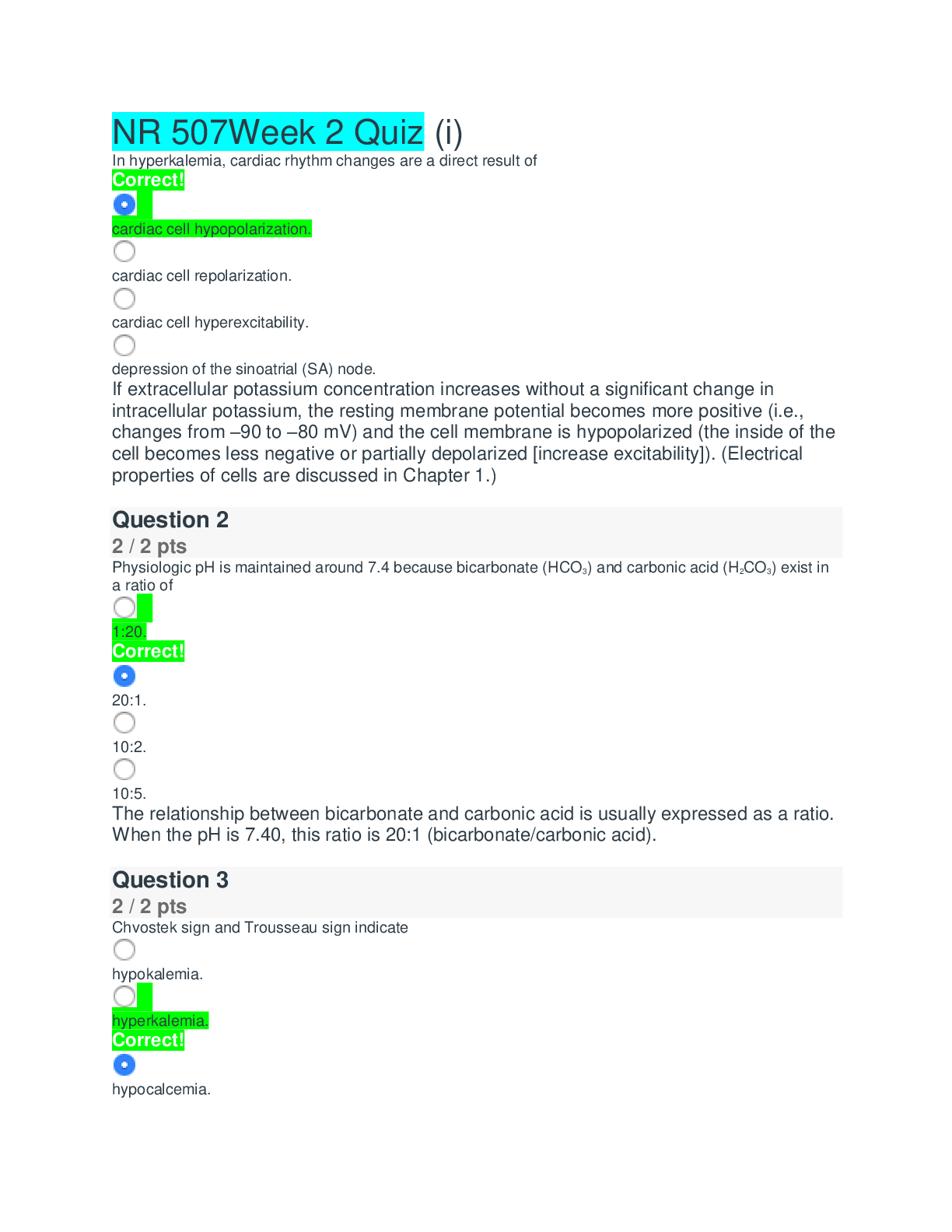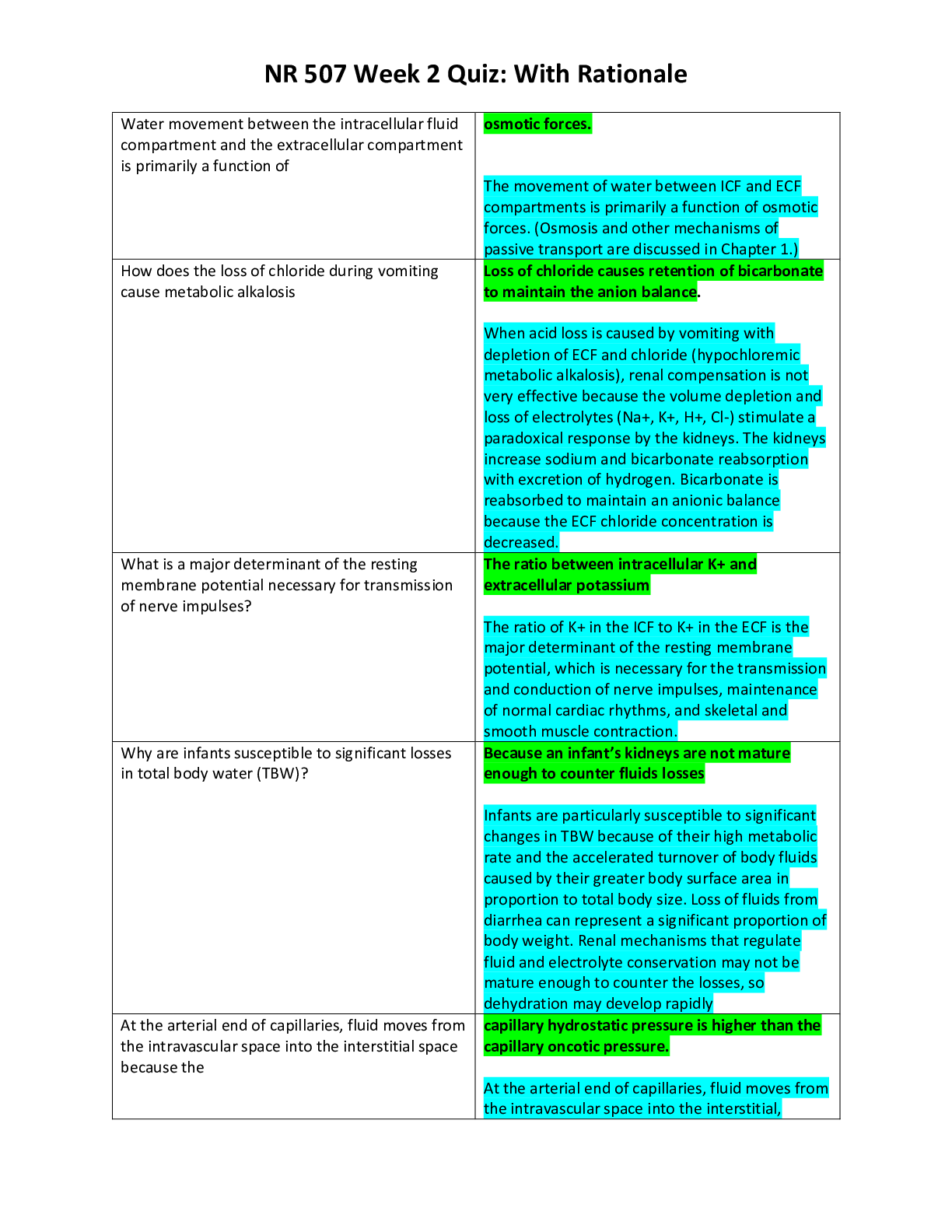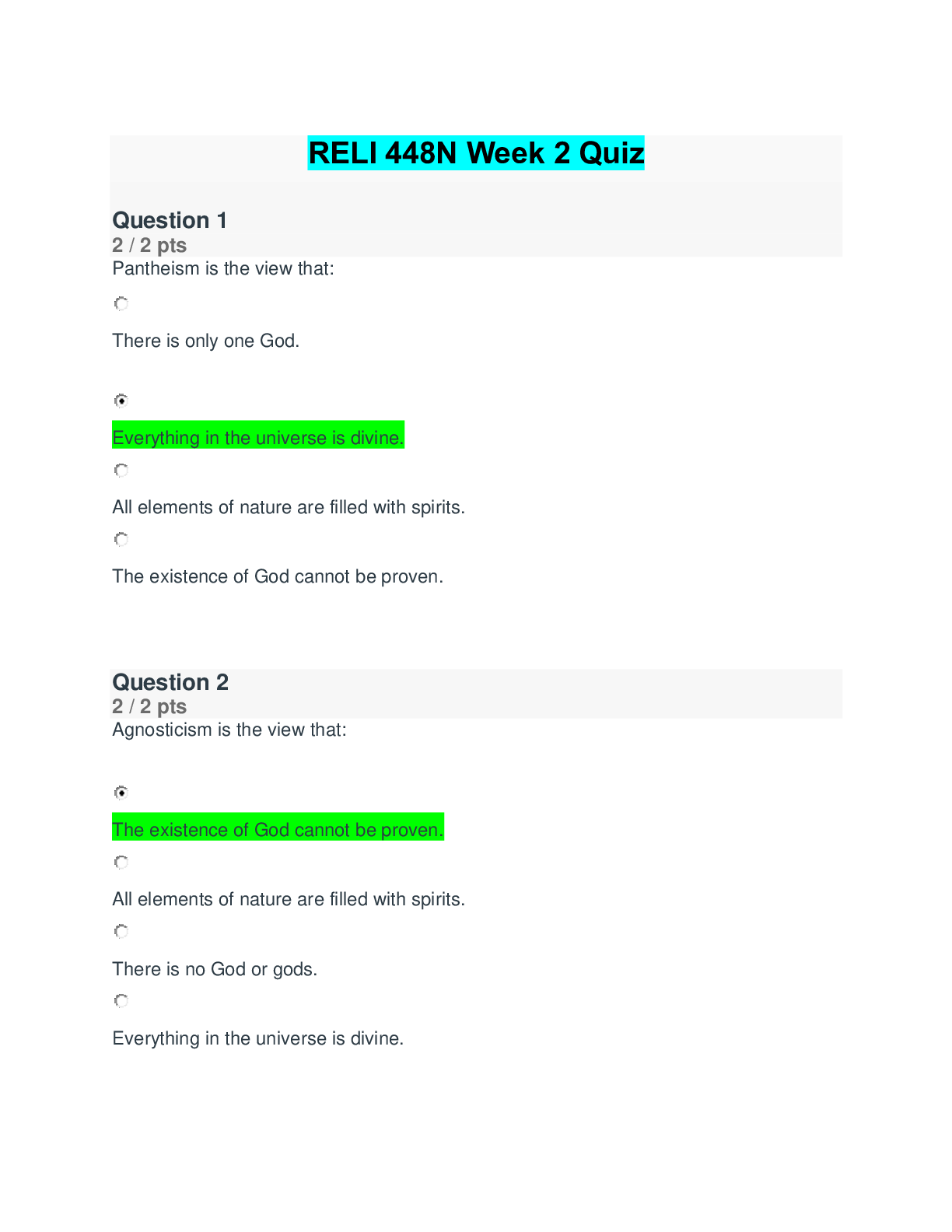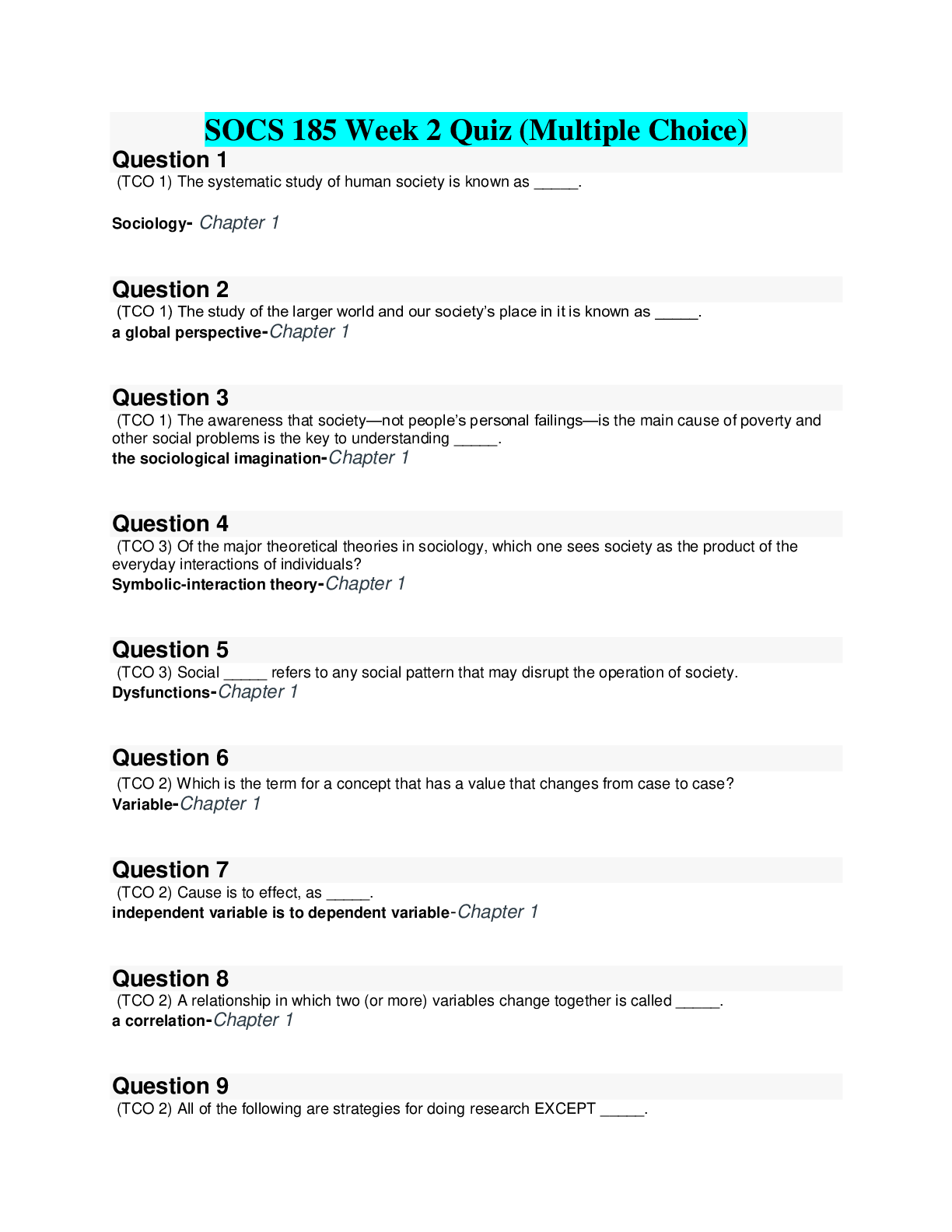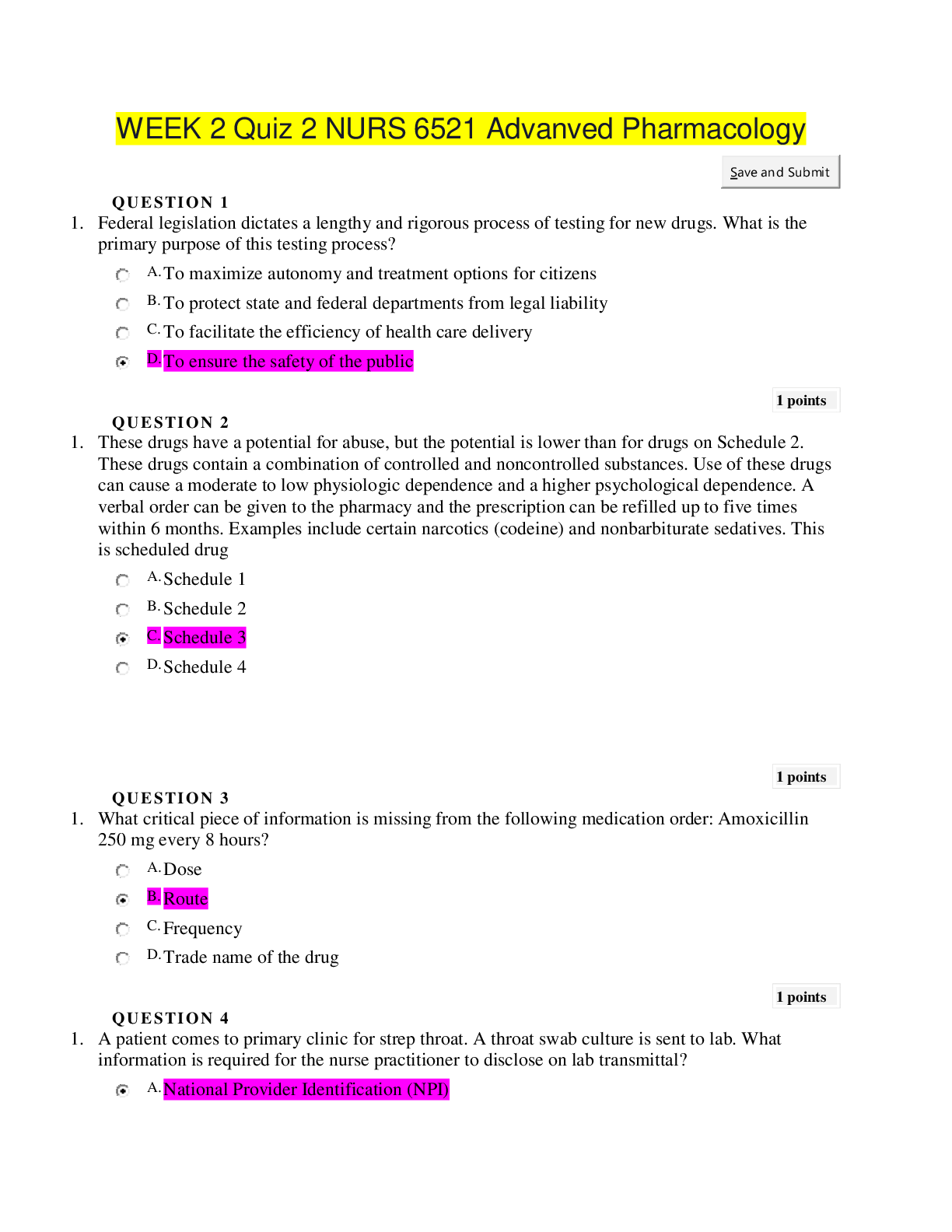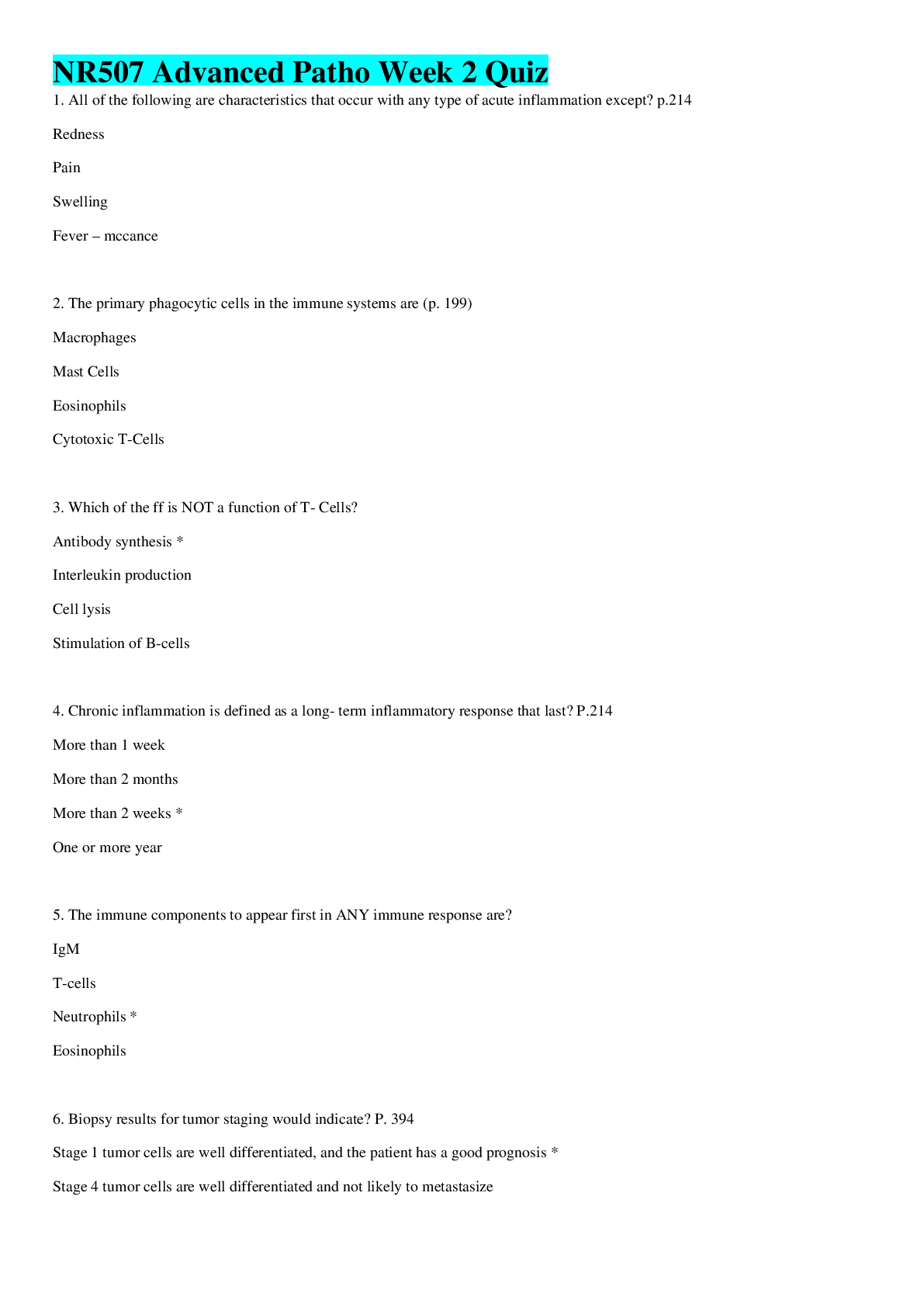*NURSING > EXAM > NURS 6512 Week 2 Quiz latest – Walden University | NURS6512 Week 2 Quiz latest (All)
NURS 6512 Week 2 Quiz latest – Walden University | NURS6512 Week 2 Quiz latest
Document Content and Description Below
NURS 6512 Week 2 Quiz latest – Walden University • Question 1 2 out of 2 points Auscultation should be carried out last, except when examining the: abdomen. ... abdomen. Response Feedback: Auscultation is the last examination technique used for all areas except for the abdomen. In this case, it is performed after inspection. • Question 2 2 out of 2 points A patient in the emergency department has a concussion to the head. You suspect the patient may also have a retinal hemorrhage. You are using the ophthalmoscope to examine the retina of this patient. Which aperture of the ophthalmoscope is most appropriate for this patient? Red-free filter Red-free filter Response Feedback: The red-free filter permits recognition of hemorrhages. The grid estimates the size of lesions; the slit lamp examines the anterior eye and assesses the elevation of lesions; and the small aperture is used with small pupils. The strabismoscope is used for detecting strabismus. • Question 3 2 out of 2 points The root of social, political, and economic tragedy often stems from: resistance to change. resistance to change. Response Feedback: To protect and maintain our sociopolitical culture, we tend to resist change. This resistance can have negative sociopolitical and economic consequences. • Question 4 2 out of 2 points Which group is characterized as emphasizing accomplishments that are measured by external standards? Dominant Americans Dominant Americans Response Feedback: People in the Dominant American cultural group, above the other choices, tend to be doing oriented, in that they emphasize accomplishments that are measurable by external standards. • Question 5 2 out of 2 points Which patient is at the highest risk for the development of latex allergy? The patient who has had multiple procedures or surgeries The patient who has had multiple procedures or surgeries Response Feedback: The patient who has had multiple procedures or surgeries has a higher exposure rate to rubber gloves and to equipment and supplies that contain latex and therefore is at a higher risk for developing an allergic response. • Question 6 2 out of 2 points A rubber or plastic ring should be around the bell end-piece of a stethoscope to: ensure secure contact with the body surface. ensure secure contact with the body surface. Response Feedback: The ring around the bell portion of the stethoscope functions to secure contact with body surfaces when placed lightly on the skin. • Question 7 2 out of 2 points What additional factors besides race and nationality compose an ethnos or ethnic group? Common culture Common culture Response Feedback: A group of the same race or nationality with a common culture and distinctive traits defines ethnos (ethnic group). • Question 8 2 out of 2 points During auscultation, you can limit your perceptual field best by: closing your eyes. closing your eyes. Response Feedback: By closing your eyes, your sense of hearing becomes more acute and it increases your ability to isolate sounds. • Question 9 2 out of 2 points Transillumination functions on the principle that: air, fluid, and tissue transmit light differentially. air, fluid, and tissue transmit light differentially. Response Feedback: Transillumination functions to differentiate between various media in a cavity. It can distinguish between air, fluid, and tissue. It consists of a strong light in the visible spectrum with a narrow beam. • Question 10 0 out of 2 points A fixed image of any group that rejects its potential for originality or individuality is known as a(n): norm. stereotype. • Question 11 2 out of 2 points The patient tells you that his ears are stopped up. An objective assessment of this complaint is achieved by using the: tympanometer. tympanometer. Response Feedback: This patient is describing eustachian tube dysfunction. The tympanometer measures compliance of the middle ear as air pressures are varied. It is an objective means of assessing the function of the ossicular chain, eustachian tube, and the tympanic membrane. • Question 12 2 out of 2 points A scale used to assess patients weight should be calibrated: each time it is used. each time it is used. Response Feedback: Obtaining weight begins with a manual calibration of the scale before the patient stands on the scale. Electronic scales are automatically calibrated before each reading. • Question 13 2 out of 2 points When monitoring serial measures, such as head circumference or abdominal girth, which procedure is best to ensure that the tape measure is placed in the same position each time? Mark the borders of the tape at several intervals on the skin with a pen. Mark the borders of the tape at several intervals on the skin with a pen. Response Feedback: The most effective procedure to ensure correct serial measurements is to mark the borders at several intervals so that with the next measurements, the tape is in the same location. • Question 14 2 out of 2 points When conducting the abdominal examination, after you inspect you proceed next to: auscultation. auscultation. Response Feedback: Auscultation precedes palpation or percussion of the abdomen because these techniques can stimulate peristalsis and that may alter correct assessment of the abdominal sounds. The rectal examination is performed at a point after a full abdominal examination is completed. • Question 15 2 out of 2 points To perform a deep tendon reflex measurement, you should: briskly tap the tendon with the rubber end of the hammer. briskly tap the tendon with the rubber end of the hammer. Response Feedback: Deep tendon reflexes are performed by quickly and firmly tapping either end of the rubber hammer on the stretched tendon, and then observing muscle movement. The pointed end is particularly useful in small areas, such as on your finger placed over the patient s biceps tendon. • Question 16 2 out of 2 points Which technique is commonly used to elicit tenderness arising from the liver, gallbladder, or kidneys? Fist percussion Fist percussion Response Feedback: The fist percussion is a direct percussion technique used to elicit tenderness over organs such as the liver, gallbladder, or kidneys. • Question 17 2 out of 2 points Knowledge of the culture or cultures represented by the patient should be used to: help make the interview questions more pertinent. help make the interview questions more pertinent. Response Feedback: The purpose of understanding the patient s culture(s) is to help the provider construct pertinent questioning and avoid stereotyping. • Question 18 2 out of 2 points Being sensitive to cultural differences that may exist between you and the patient is most useful in the avoidance of: miscommunication. miscommunication. Response Feedback: When you perceive that cultural differences may exist, you must first use culturally sensitive communication modes in order to correctly grasp what the patient means or else prejudice, stereotypic judgment, tendency to preach, and opinion formations may inadvertently be perceived by the patient. • Question 19 2 out of 2 points The dorsal surface of the hand is most often used for the assessment of: temperature. temperature. Response Feedback: The dorsal surface, or back of the hand, can best feel for warmth. • Question 20 2 out of 2 points When using mediate or indirect percussion, which technique is appropriate? Place the palmar surface of the nondominant hand on the body surface with the fingers slightly spread apart. Place the palmar surface of the nondominant hand on the body surface with the fingers slightly spread apart. Response Feedback: The palmar surface of the nondominant (stationary) hand should rest against the body surface with the fingers spread slightly. To improve eliciting correct tones, a helpful tip is to hyperextend the middle finger of the stationary hand and place the distal interphalangeal joint of the middle finger firmly against the body surface. This lifting of the fingertip avoids dampening of the vibratory sounds. [Show More]
Last updated: 2 years ago
Preview 1 out of 11 pages
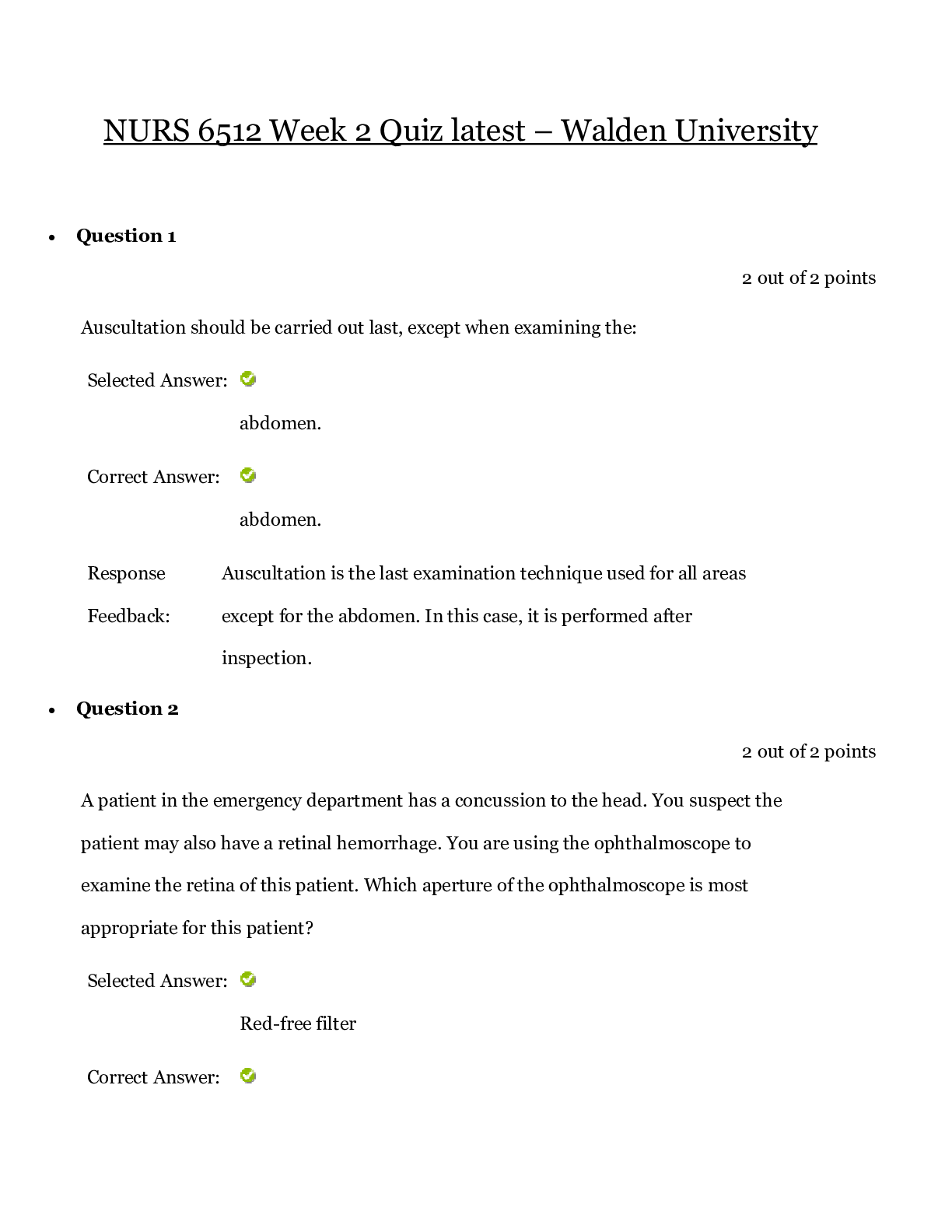
Buy this document to get the full access instantly
Instant Download Access after purchase
Buy NowInstant download
We Accept:

Reviews( 0 )
$12.50
Can't find what you want? Try our AI powered Search
Document information
Connected school, study & course
About the document
Uploaded On
Nov 14, 2020
Number of pages
11
Written in
Additional information
This document has been written for:
Uploaded
Nov 14, 2020
Downloads
0
Views
74








 – University of the People.png)




